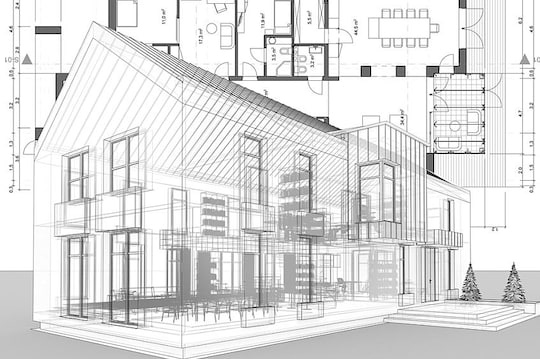
Being a contractor means inevitably having to deal with the occasional callback, but that doesn't mean there aren't things you can do to prevent them.
Callback prevention doesn't just mean trying to do better on any one particular job, though—the best way to prevent callbacks is to make business-wide changes in how you train and oversee employees. It may seem like a daunting task, but learning to prevent callbacks is worth the effort. Fewer callbacks mean more money saved, better worker morale, and a more positive company reputation.
The Cost of Callbacks
The most concrete downside of callbacks is the cost, but many roofers don't keep track of how many callbacks they've had, and so aren't aware of just how much they're costing their company. A closer look at the cost of callbacks usually shows huge opportunities for saving money by preventing them.
Here are examples of what callbacks could cost your company:
Cleanup-Related Callbacks: $100
For cleanup, you would send a worker—often the foreman—to make sure the site is perfect. Calculate two to three hours salary for travel and work time, fuel and expense costs for the truck, plus missed work costs for whoever you send to re-clean. This may not be a lot on its own, but a few of these a month can really add up.
Leak-Related Callbacks: $200-$300
A simple leak might cost you $200 to $300. You'd need to send an experienced employee who could find the source of the problem and solve it, and pay for their time and any equipment they may need. Again, this isn't a lot on its own, but it can add up.
The Big Callback: $500 - $2,000+
This is the call you really don't want. There are endless possible causes—maybe a section of shingles wasn't properly installed, or maybe a roof inspector found an unexpected issue. In the worst-case scenario, you could be responsible for replacing the entire roof, essentially doing a job over again because it wasn't done right the first time.
Common Reasons for Callbacks
If you're committed to preventing callbacks, it's important to first understand why they're happening. These three preventable issues are some of the most common reasons for callbacks.
- Sloppy Cleanup: Poor cleanup causes callbacks, even if nothing else has gone wrong on the job site. "90% of a roof can't be seen by the homeowner," said Guillaume Bailly, Canada Senior CARE Training Manager for GAF. "If the cleanup isn't done properly, and the homeowner sees nails and roofing materials lying around—they think, 'If the roofers left this mess, what else is wrong?'" This can lead to unnecessary callbacks.
- Miscommunication During Sales: "When you're selling a roof, don't sell a unicorn," said Bailly. The salesperson often isn't the installer, so they may inaccurately describe what the homeowner should expect. As a result, there can be misunderstandings. Lack of communication between the salesperson and the installer can lead to unhappy customers and callbacks, but getting everyone on the same page before they talk to a customer can make the process go much more smoothly.
- Rain and Leaks: Typically, leaks come with the first rain and occur around detailing, such as skylights or flashing. This is easily fixed with a caulk gun and tube of cement, but by then, the homeowner is worried they have a bad roof. This wasted time and reputational damage can be prevented if workers are trained to work more carefully, to begin with.
How to Prevent Callbacks
Callbacks are expensive, but good installation and cleanup can help prevent them. Better equipment and materials are an essential part of this process. Shingles built for speed and accuracy—like the Timberline® HDZ™, which has the widest nailing zone in the industry—aid in quality installation.
In addition, smart training and business management can go a long way toward preventing callbacks. Try these four business practices to help ensure consistent install quality and good cleanup.
Train New Hires Well
Training is one of the most important factors in reducing callbacks, according to Bailly. He estimates that poor training could result in callbacks on 10-20% of on roofing jobs, while a well-trained crew may lead to callbacks on only 1-3% of jobs. A lack of training can lead to a high discrepancy in install quality within the same company, which can result in expensive problems. You can minimize these issues and prevent callbacks by training every new hire to use the same install procedures.
Create Standard Operating Procedures (SOP)
SOP help to prevent leak-related callbacks and other installation problems. Many roofing contractors do not have SOP, which then gives each person on the crew the freedom to use their own personal technique. This leaves more room for error (and, sometimes, arguments). To prevent this, start by creating a checklist for every step of the installation process, and make sure each of your team members has access to it.
Give Foremen Leadership Training
A roofing crew needs a strong, encouraging leader who enforces SOP. Many foremen, however, haven't had formal leadership training, according to Bailly. Oftentimes, they are the ones who excelled at installing and got promoted as a result. Being a foreman is very different from being an installer, though, and new foremen need training on how to run a crew effectively. A strong leader in the foreman role who provides purpose and encouragement makes for a stronger roofing crew that's motivated to do higher-quality work.
Empower Your Laborers
The cleanup guys are often the least trained and lowest paid, so they don't have as much motivation to do a thorough job. Empowering these workers with proper training and acknowledging their importance in your crew can help reduce callbacks.
Bailly suggests communicating their importance to them by explaining that, "The customer can't see how we're installing the roof. All they see is your cleanup, so you have a big impact on our reputation." If your laborers understand why their work is valued, they'll be less likely to rush through the work.
Want to learn more strategies for growing your business and training your crew? The experts at the GAF Center for the Advancement of Roofing Excellence (CARE) are here to help, with live training and on-demand learning.




